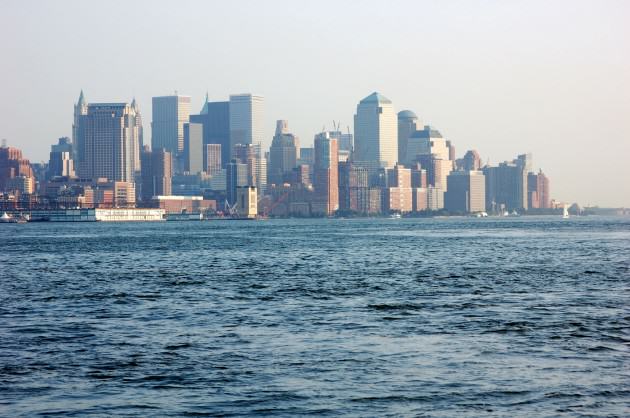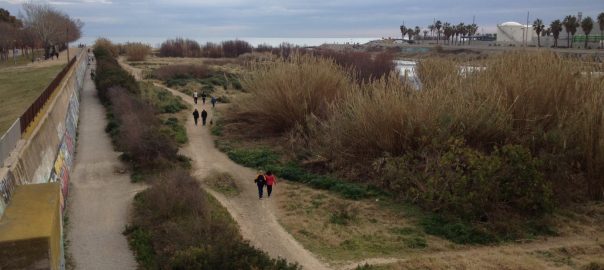The following is an excerpt from my new book, Terra Nova: The New World After Oil, Cars, and Suburbs (Abrams, June 2013), which is about, at least in part, how cities can fit into nature:

Many years ago, before I moved to the city, I had a job in the wilderness. I took a summer position working for the botanist at Sequoia National Park in the Sierra Mountains of California. We intended to catalog a sample of the plants that lived there, which entailed casting random darts at the park map (using the computer), then hiking into the backcountry to that point and identifying every tree, shrub, grass, and herb we found within a radius of 17.8 meters (equivalent to an area of one-tenth of one hectare, or about a quarter acre). If our circle landed in a conifer forest, we might get thirty or forty species, but if our circle happened to catch the edge of a stream, we would get three or four times that many. Water was the key to productivity and diversity.
In town between these scientific backpacking expeditions, I shared a house with an economics major (also a summer tree counter) and one night we fell to talking streams, which in the manner of collegiate conversations, somehow morphed into a discussion about economic fundamentals. My housemate declared there are three sure ways to make money in a competitive economy: (1) Make something first; (2) Make something better; and/or (3) Make something cheaper than everyone else. He said the long-term problem with the economy is that most people are not innovative enough to come up with something totally new or skilled enough to be the very best at whatever they’re doing, so many folks fall back on the strategy available to all of us, that is, Strategy #3: Make something more cheaply, by cutting costs for labor, using inexpensive ingredients, hiring machines to do the work, avoiding taxes, etc. My friend said it doesn’t matter if you sell a few things for a lot of money, or sell a lot of things for a pittance. Either way, profits add up; you make money. The modern Chinese economy, Walmart, and the plastics industry are all been built on Strategy #3.
I asked how that relates to a stream. And he said something that has been lodged in my memory ever since: “Cities are our streams.”
Cities Are Our Streams
I chewed on that idea for a long time. It didn’t make sense when I heard it because like most kids who grew up in the suburbs in the 1970s, I thought of cities as places where poor people lived. Downtown Oakland didn’t seem like a place with a lot of money. Blighted city centers contrasted with the blooming productivity of the countryside in California, rapidly being bulldozed for cul-de-sacs and new houses. I knew exactly what cities did to streams: they obliterated them. I began reading Lewis Mumford, Jane Jacobs, Max Weber, and other philosopher-historians of the city after I moved to the city. I learned that urban areas had a surprising track record of promoting innovation and productivity, back to the first walled towns of Mesopotamia, Egypt, and China. And why?
Everyone seemed to have their favorite answer. Weber and contemporary economists like Edward Glaeser and Richard Florida write about lower transaction costs due to proximity and sociality. They describe urban “agglomeration economies” enabled by increased specialization, greater division of labor, and economies of scale. Jane Jacobs and other urban planners saw cities as places with tightly intermixed private and public spaces that promoted a uniquely dynamic way of life. The apartment overlooking the street allowed everyone in the neighborhood to keep an eye on the kids playing outside; the lively street in turn created a shared, vital public domain, which partly mitigated the apartment’s tight quarters, encouraging people to turn outward, toward the city and the community, rather than inward, as suburban families do, toward the backyard. Cities also tend toward diversity—of culture, of income, of ideas—which in the right conditions can promote humility and tolerance, while generating the disconcerting, useful contrasts that often underlie new thoughts. New notions emerge when ecologists share houses with economists. It matters who you might bump into in the street and that enough people are out to have someone to bump into. Intensity, diversity, and density make cities engines of progress, economic success, and serendipity.
The results are remarkable. Consider New York City. The economy of the New York metropolitan area, though dragging from the Great Recession, still managed to produce $1.28 trillion in value during 2010. That’s more economic productivity than any one of these countries the same year: Mexico, South Korea, Netherlands, Turkey, or Saudi Arabia. It’s more than the economies of Malaysia, Portugal, Singapore, Hong Kong, and Egypt combined. And it’s not just the biggest cities that produce. The metropolitan area of Austin, Texas, generated $86 billion itself, more than sixty national economies, including oil-blessed Oman, Azerbaijan, Gabon, and Bahrain.

To the arguments of Weber and Jacobs, we can add another beneficial quality of urban life described in David Owen’s 2009 book, Green Metropolis, and a few others: cities are more environmentally efficient. Shocking, I know. How can living in a leafy suburb possibly be harder on the environment than the burdens a city imposes on its land, air, and water? But the statistics do not lie. The average New Yorker uses about two-thirds of the amount of electrical power as the average American, and produces a third as much carbon dioxide. Because cities are dense, buildings tend to share walls, which share heat, lowering energy bills. Public transportation is more practical and walking more likely, because distances are shorter. New Yorkers also use less water per person (by 74 percent) and generate less garbage (by 45 percent) than the average American and yet seem to enjoy, despite the traffic, noise, and attitude, a reasonably high standard of life (though for sure, there are poor people in New York too.)
Cities with enough density can promote creativity and resource efficiency at the same time: a win-win solution to both economy and ecology, obtained, counter-intuitively, in town.
Eric Sanderson
New York City







Leave a Reply